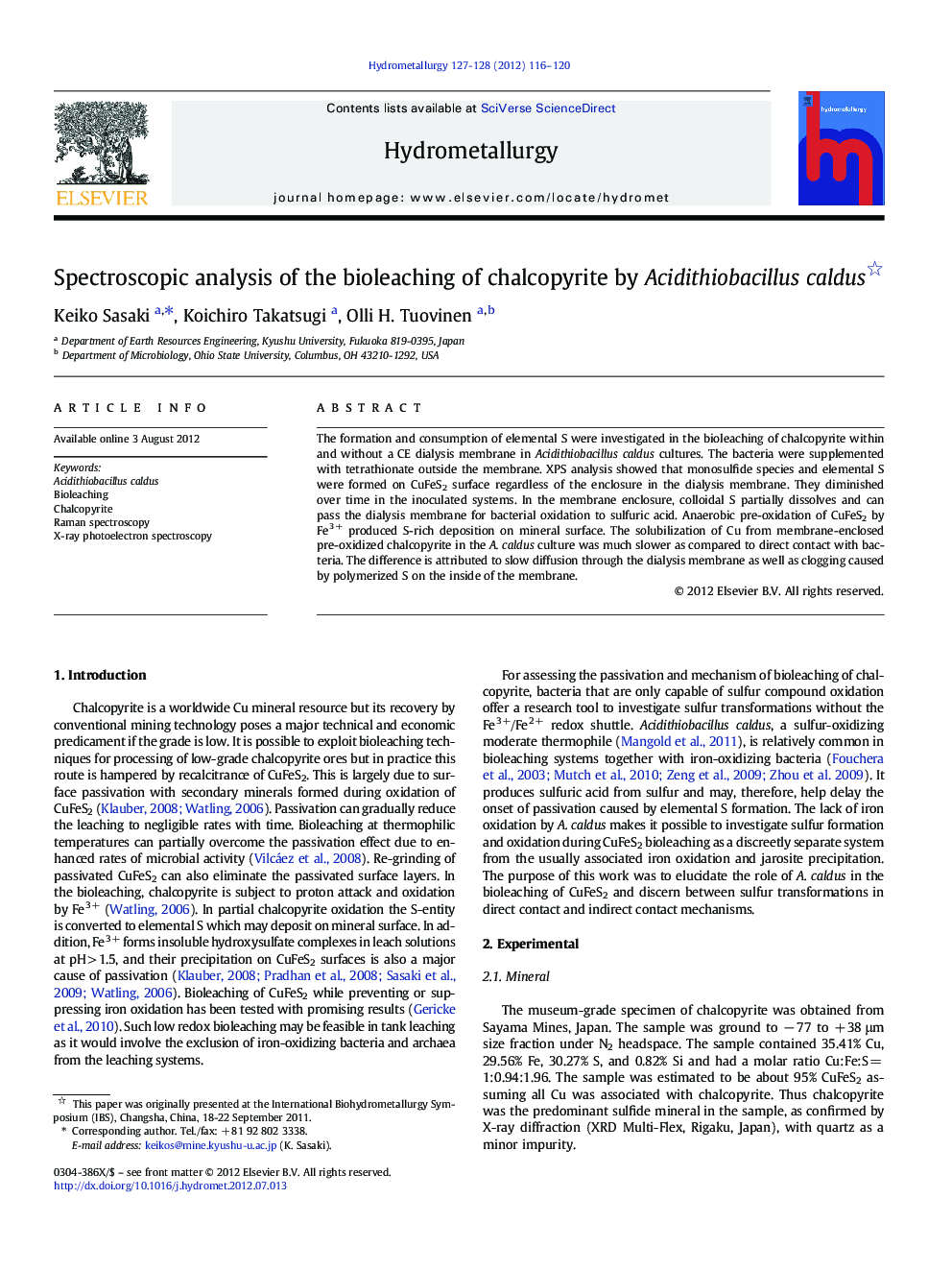| Article ID | Journal | Published Year | Pages | File Type |
|---|---|---|---|---|
| 212511 | Hydrometallurgy | 2012 | 5 Pages |
The formation and consumption of elemental S were investigated in the bioleaching of chalcopyrite within and without a CE dialysis membrane in Acidithiobacillus caldus cultures. The bacteria were supplemented with tetrathionate outside the membrane. XPS analysis showed that monosulfide species and elemental S were formed on CuFeS2 surface regardless of the enclosure in the dialysis membrane. They diminished over time in the inoculated systems. In the membrane enclosure, colloidal S partially dissolves and can pass the dialysis membrane for bacterial oxidation to sulfuric acid. Anaerobic pre-oxidation of CuFeS2 by Fe3 + produced S-rich deposition on mineral surface. The solubilization of Cu from membrane-enclosed pre-oxidized chalcopyrite in the A. caldus culture was much slower as compared to direct contact with bacteria. The difference is attributed to slow diffusion through the dialysis membrane as well as clogging caused by polymerized S on the inside of the membrane.
► Sulfur oxidation was the primary role of A. caldus in CuFeS2 bioleaching. ► Separation of CuFeS2 from A. caldus resulted in slow Cu and Fe dissolution. ► The oxidation of CuFeS2 caused colloidal S accumulation inside the membrane. ► The S-rich layers are not all tenacious associated with CuFeS2 surface.
